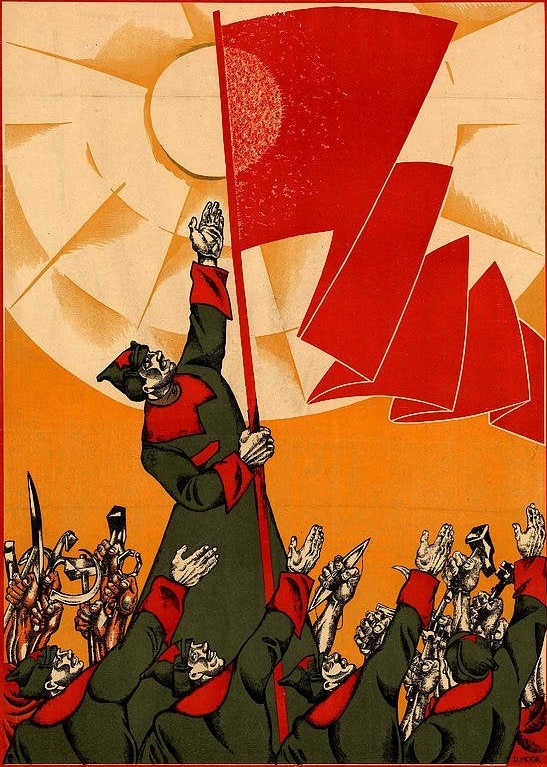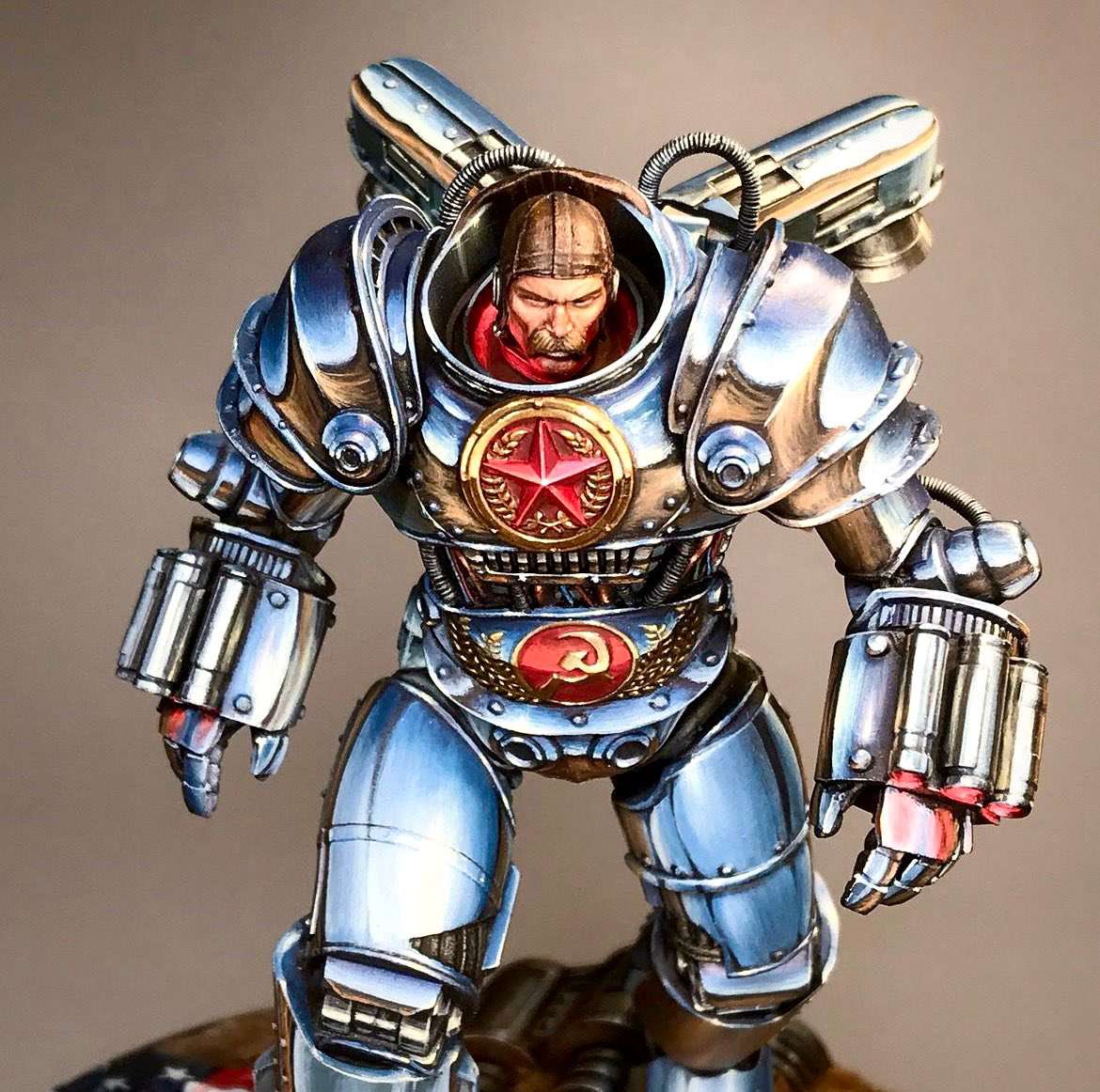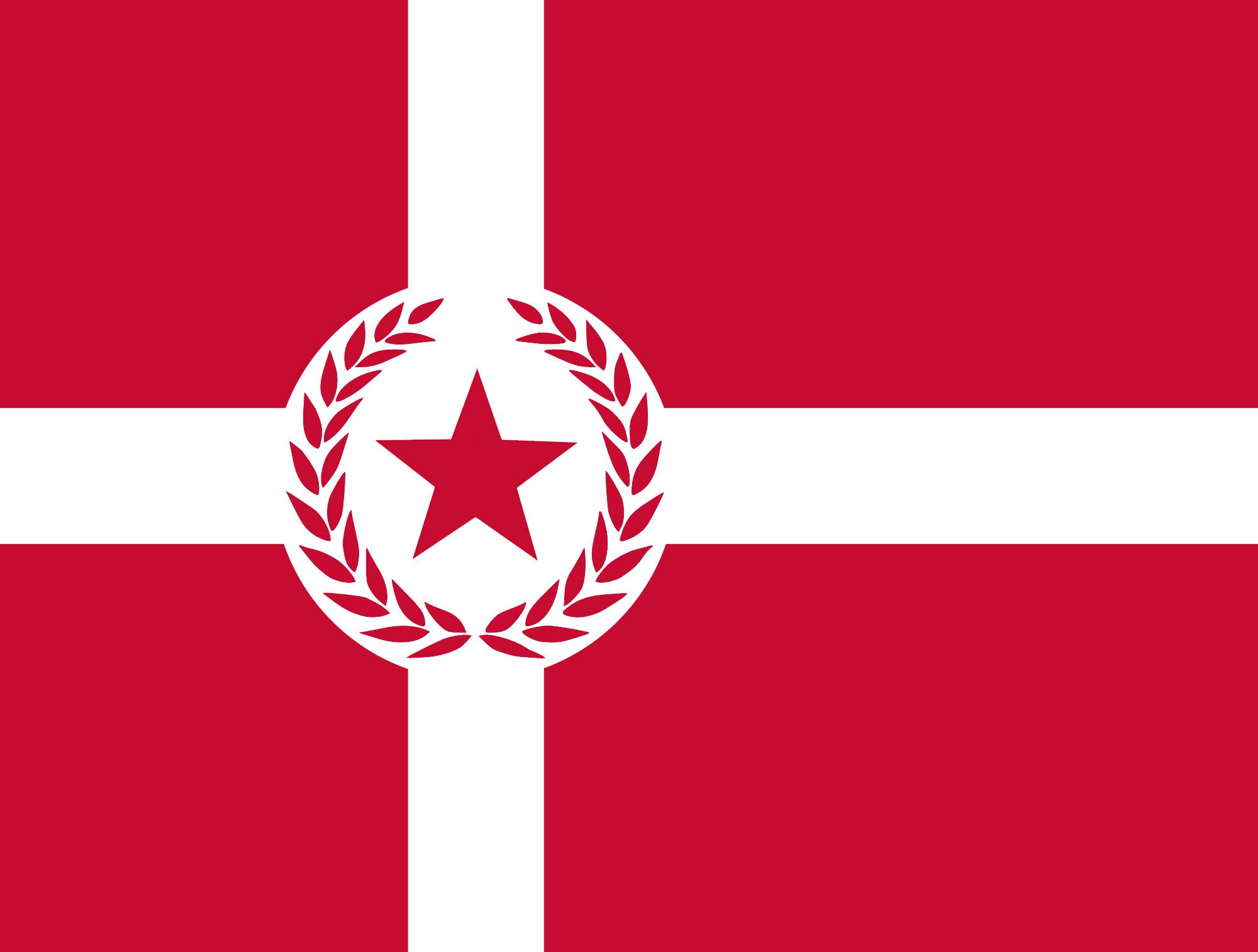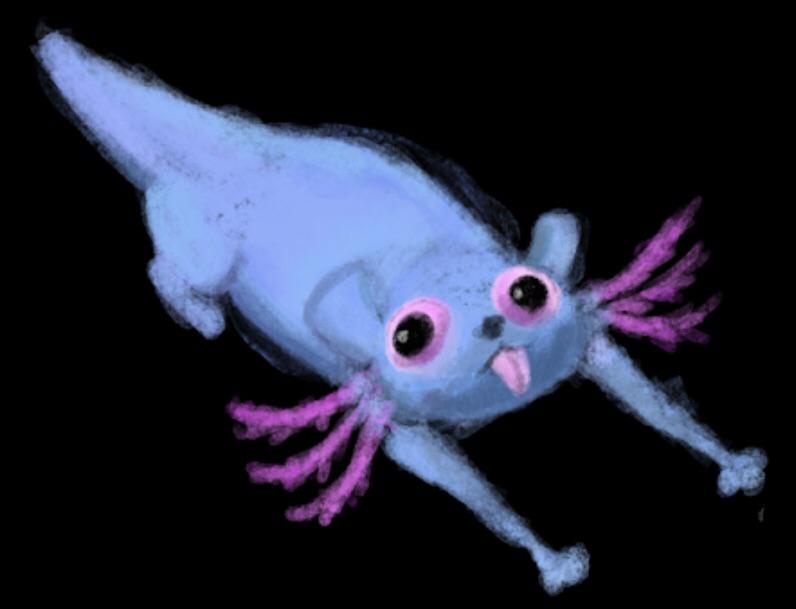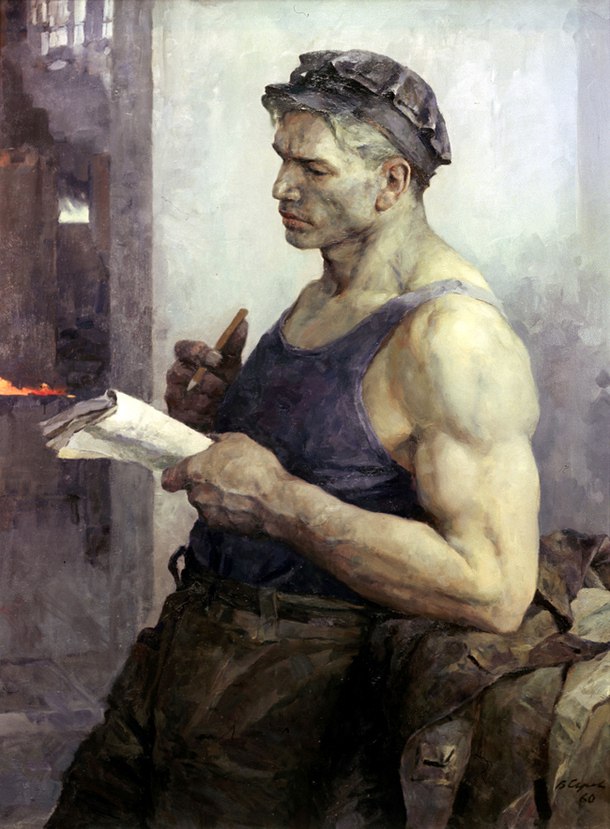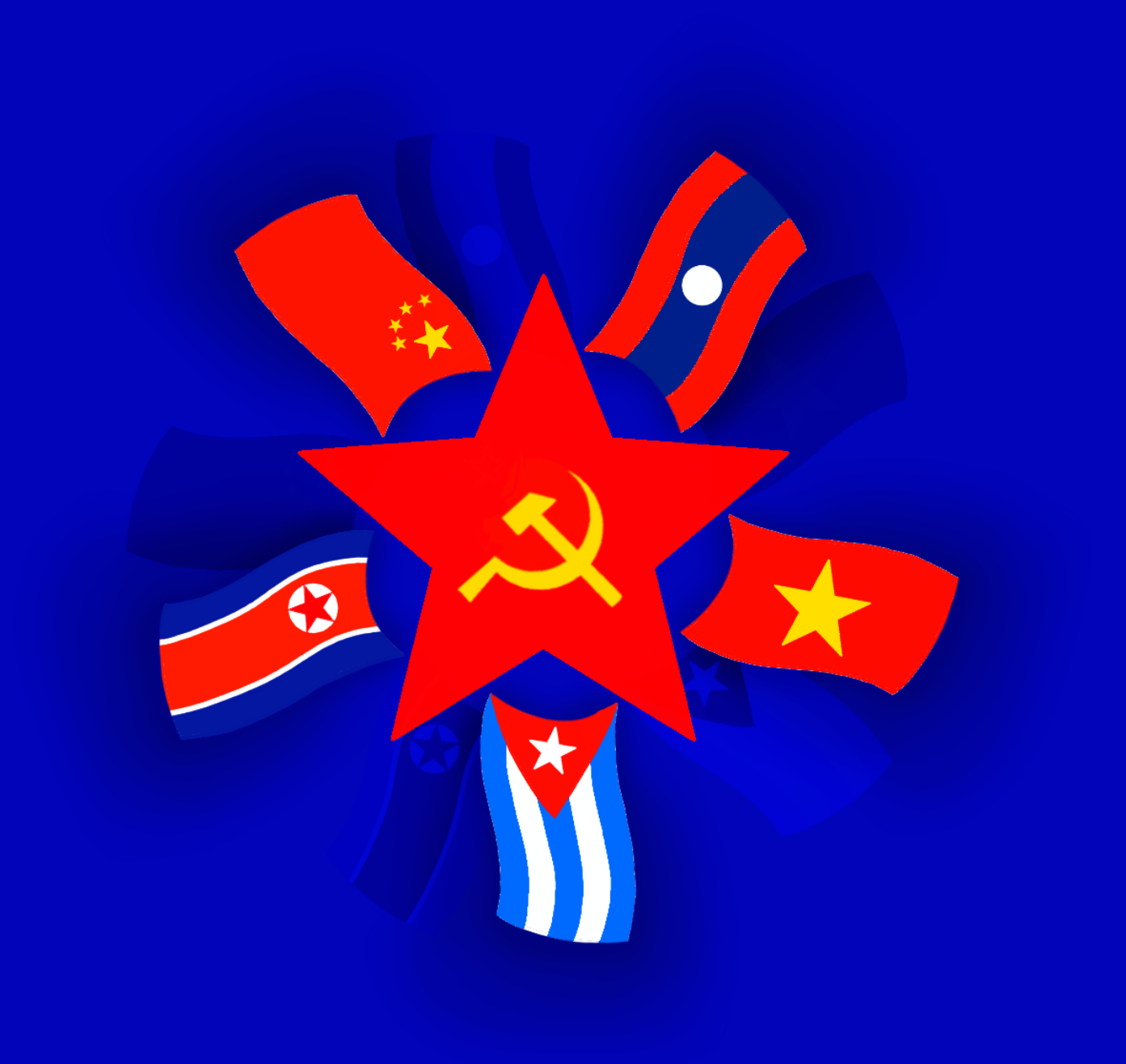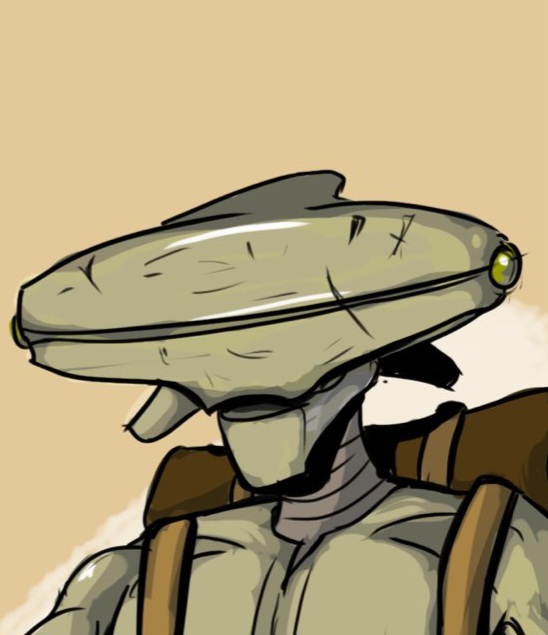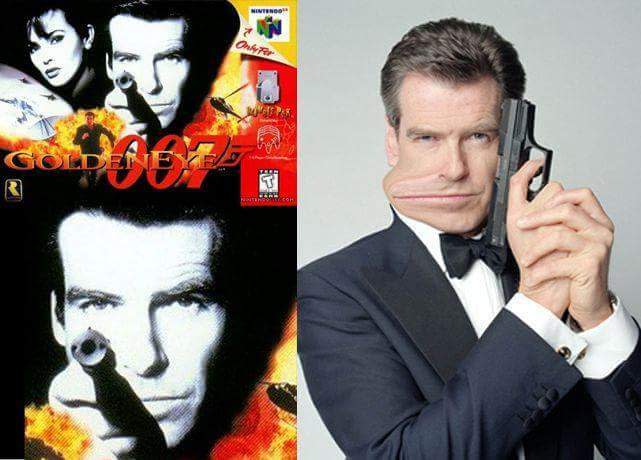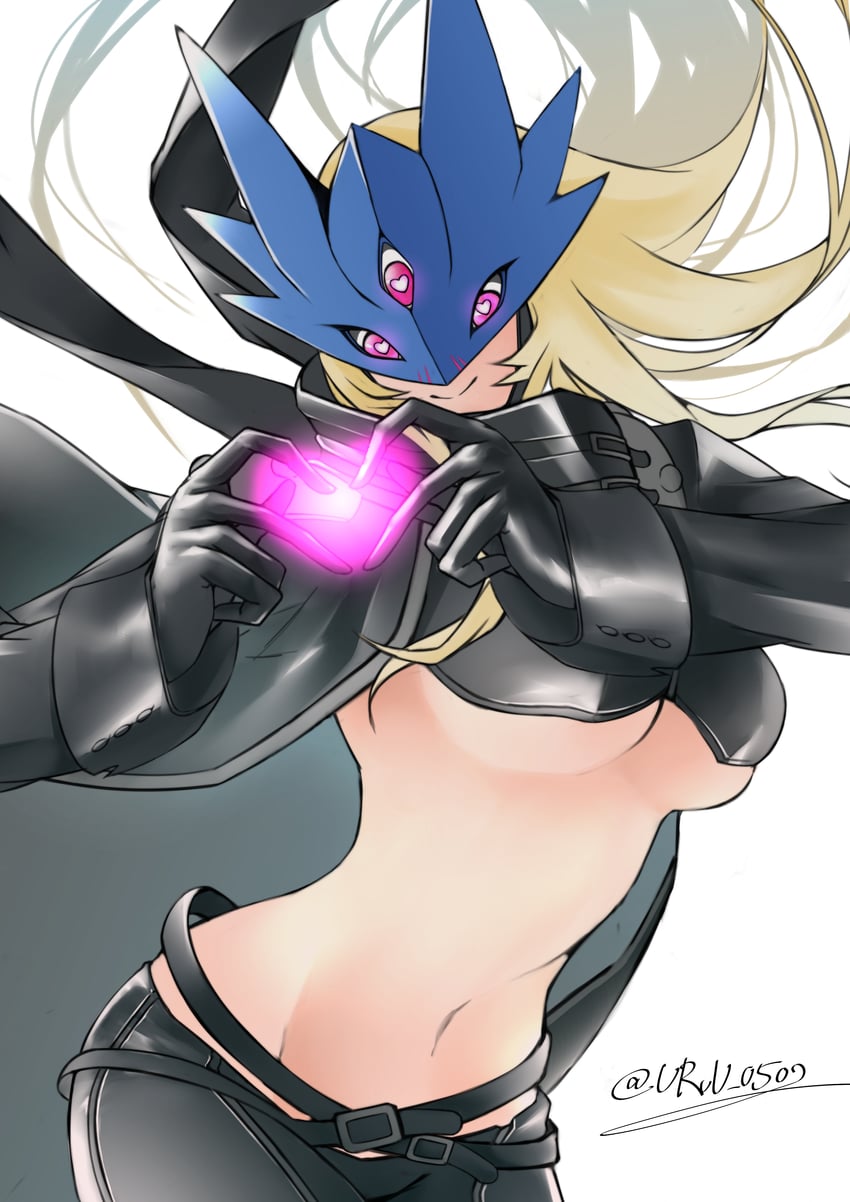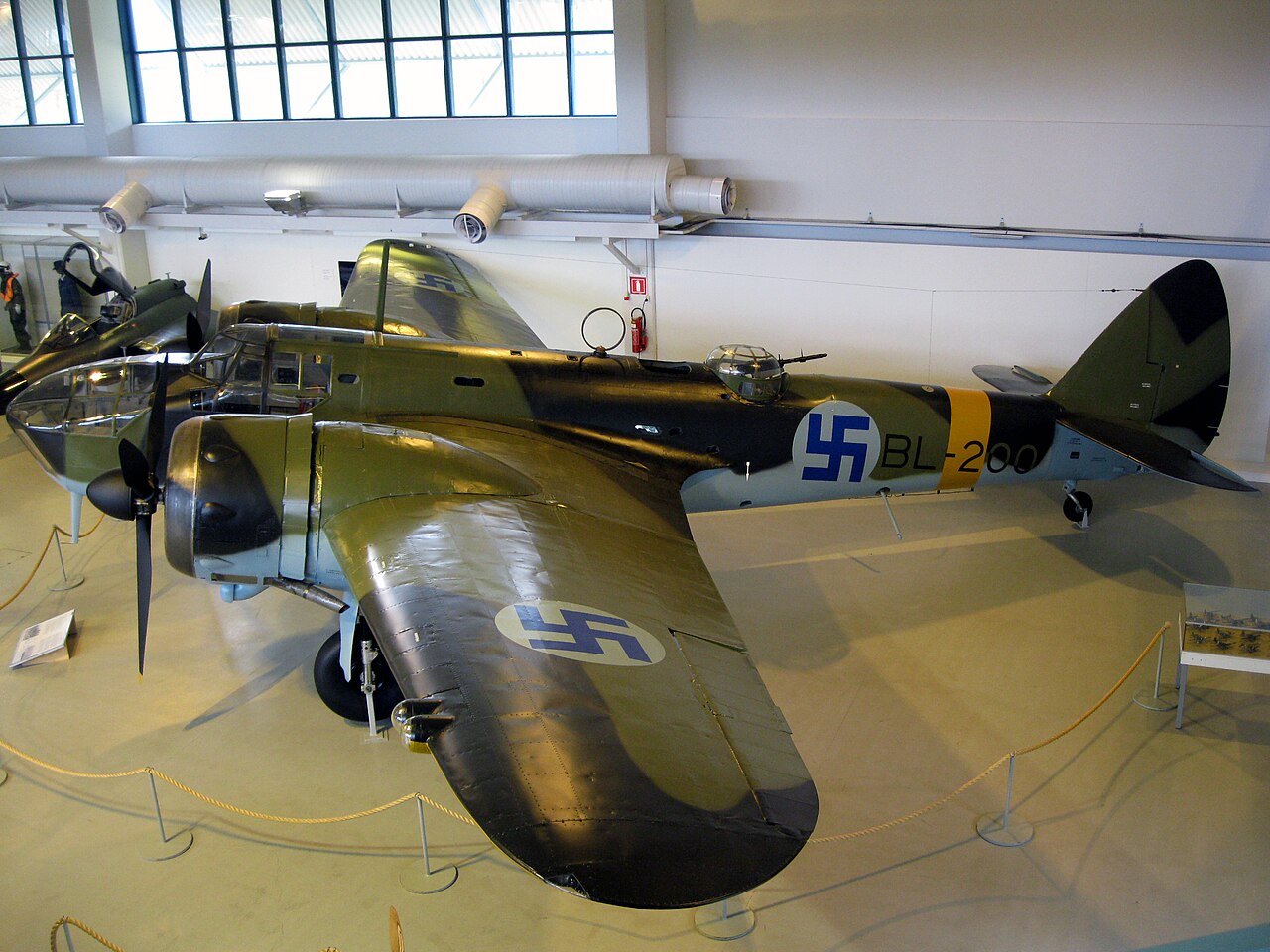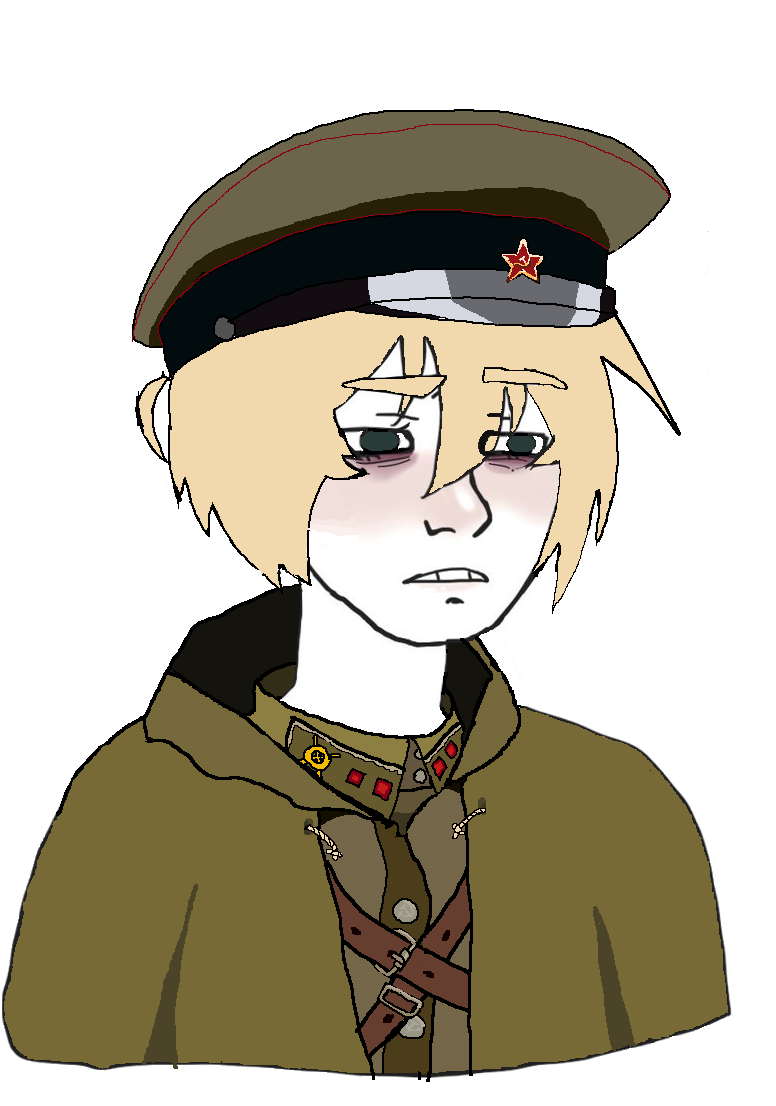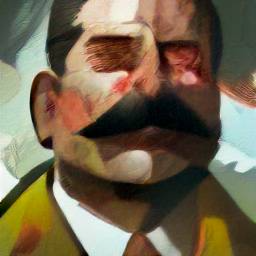Btw even Finnish historians agree that the number is pure bullshit, made up for propaganda purposes. Soviet archives analysis confirms it, if it was real he would have to singlehandedly caused half of the losses of Soviet units located there.
Don't tell finnaboos that, you'll cause a meltdown not seen since the formation of the Earth
I already did few times and the effect was as you describe. Funnily enough, it's not even any tankie lore, even their beloved wiki mentions that.
Was it some online squabble? I can't imagine anyone reacting much to it irl since most agree the stuff is exaggerated. It's a sore point or anything.
Anticoms in Poland do mention Hayha a lot irl too if the talk goes anywhere near the topic.
Like people enthusiastic about Finland or Finns? Because I wouldn't be surprised by the reaction from first group, whereas I'd be really surprised by the latter. I have some of the flag waving, Finnish lion wearing nationalistic friends and when we talked about it some time ago everyone agreed that the number is exaggerated and the discussion was more about by how much. I think some thought it was still really high and some were just unsure. Of course this is just my experience. Abroad those people might be more boastful hah
There's tons of wehraboos in Poland and that usually include FInland too "Hayha killed 500 Russians singlehandedly" compiled with "Finland totally shows those commie cockroaches their place" etc. they love when someone kill Soviets and Russians so they always take the asspulled numbers like gospel.
Ah. Partly that might be because Winter War and Finland's WW2 history is in that spot where people know a few (often exaggerated) tidbits that make them feel knowledgeable about it but not enough to really know stuff. In that context believing the 700 noscope 360's seems more reasonable. Hearing someone outside of Finland talk about Finland's history during WW2 is one of those cases where you're sure to hear a mistake or two. Hell, you can see it here in the comments. But a lot of it is imo pretty understandable.
I think me and most Finns know it's exaggerated. That's usually brought up when talking about him. Most think he was impressive sniper but not that impressive.
yeah but the fashies don't want to talk about that
I don't think I know any Finnish fascist so can't really say what they talk about. But if they're at all into war history they might know it was exaggerated. It's brought from time to time
Fifty years from now: "The Ghost of Kiev was the deadliest top gun in history."
When you take a lil peek in the ark of the covenant and your stupid nazi face melts just a lil bit
Who was Finland allied with? Also, why was the symbol of the finnish military a swastika until 2020?
Nobody. During Winter War Finland was fighting alone against Soviet Union.
I think that's one of the things that made the war so notable, tiny Finland fighting against huge Soviet Union, 1 v 1.
It wasn't the symbol of Finnish military till 2002. It was in some limited use. I think it still is btw. The reason was that it's old Finnish symbol since I think iron ages or before and for example the air force logo came from a Swedish count in 1918. Pretty interesting history.
Holy hell this is wrong. Finland in the winter war was a fascist state allied with Germany and it had been since the communists lost the civil war in 1918. Communists had been rounded up and put in camps by the tens of thousands. Finland was effectively a German puppet state by the time the Soviets invaded in 1939.
Finland in the winter war was a fascist state allied with Germany
No, you are thinking of Continuation War. During Winter War Finland wasn't allied with Germany, rather contrary to that Germany was hampering some efforts to ship armaments to Finland because of Molotov-Ribbentrop. Not only that, Finland wasn't at all fascist. It was a functioning multi-party democracy.
Finland was effectively a German puppet state by the time the Soviets invaded in 1939.
That has no basis in reality. I suggest you read this article that gives some basics about the background for Winter War https://en.wikipedia.org/wiki/Background_of_the_Winter_War
See for example: "Finnish–German relations cooled after the National Socialist Party rose to power in Germany in 1933. Finns admired Imperial Germany, but not the radical and antidemocratic Nazi regime. Finnish conservatives did not accept the Nazis' state violence and antireligious policies. Still, there was sympathy for German aims to revise the Treaty of Versailles, but the official Finnish policy was reserved, especially after the German invasion of Czechoslovakia. Finland even recalled its ambassador for a short period.
Finnish Nazis and ultranationalist parties such as the Patriotic People's Movement achieved only minor support in several elections, especially in the aftermath of the failed Mäntsälä rebellion in 1932."
Jerking off about the Winter War is stereotypical Finnish online mega cringe.
I honestly see it a lot more from people outside of Finland. And we often cringe at that too.
"Oh you're from Finland? Kimi Räikkönen Simo Häyhä Winter War you win against USSR right??"
"..."
Why did Finland Siege Leningrad from the north and seize the northern isthmus?
Why did Finland attempt to cut off Murmansk on the German’s orders?
That's not Winter War, that's Continuation War. Simo Häyhä didn't fight in Continuation War. As for war aims during Continuation War, the answer is obvious, to defeat USSR. It's like asking why Germany bombed the UK.
He wanted to fight in the Continuation War, he was barred entry to the army.
Also the Continuation War began in 1944. Those things I mentioned happened in 1941, during Operation Barbarossa. Finland was an ally of Nazi Germany.
He wanted to fight in the Continuation War, he was barred entry to the army.
Yes
Also the Continuation War began in 1944.
No, Continuation War happened 1941-44. You're thinking of Lapland War now. That's 1944-45.
*puts on spectacles*
Uhm, achkshually, that would be a lot funnier if people weren't arguing with me about the dates and getting them wrong.
*pushes them further up the nose*
So there!
Caught your ass. I was trying to get you to say that.
And why did Finland begin fighting the continuation war at that time?
Show
In this case the communist attacked you and started shooting you first. I'd imagine most would defend themselves when attacked
It's an interesting idea though that anyone who communists attack are Nazis. Maybe the funniest conclusion from that is that Vietnamese were Nazis since China attacked Vietnam in 1979.
The Finnish state that fought the Soviet Union, the one which was allied with Nazi Germany, was only established after the wholesale massacre of communists and workers. Anticommunism is the modus operandi of fascism in all its forms. The axis powers in WWII were formalized in the "Anti-Comintern Pact" to which Finland was a signatory.
Using something happened in 1918 and especially 1941 to justify calling Finland Nazi during Winter War that happened in 1939-40 seems fairly creative.
Interesting thing about the Civil War and Winter War though. After the Civil War Finland was heavily divided nation for a long time. And while the wounds had started to heal some, it was the opposition to the Soviet attack that actually brought the left and right together. I'm not sure how true it is, but I've heard Stalin expected the Finnish workers to celebrate him coming over and "freeing them" and was quite surprised that they were having none of that.
https://www.nytimes.com/2019/02/10/world/europe/finnish-volunteers-very-likely-participated-in-killing-of-jews-in-wwii.html
That's again something that happened after Winter War. Official Finnish policy towards Jews was luckily much better during the war. Even resulted in funny things such as Nazis awarding a Finnish Jewish soldier the Iron Cross, which is just bizarre to think about.
It would feel a bit strange to say Finland was Nazi during Winter War because during Continuation War Finland was Axis aligned when the USSR attack in Winter War is the biggest reason Finland sought closer ties with Germany.
The USSR wanted Finland to give it areas including the main Finnish defensive line. Knowing what happened with Czechoslovakia and "just a few areas" and knowing what happened to Baltics, it's easy to see what road that would've taken Finland down on.
You’re saying the Continuation War happened solely because of the Winter War
No, I'm saying Finland sought help from the Nazis because during Winter War Finland was left completely alone, the preferred alliance direction of Nordics or UK/France/US panning out to not have done much at all. And both sides, USSR and Finland knew it was just a temporarily truce and another war was coming. Obviously Finland didn't want to be alone, again.
the noted anti-communists were in no-way ideologically aligned with the Nazis before the USSR’s attack
Mostly the Finnish leadership were noted anglophiles.
For sure. But both sides saw another war coming and with how close Finland was to being fully occupied, the worry was that this time Soviet Union wouldn't stop until they had achieved that. Understandable worry in my opinion, even though fighting alongside Nazis is a black mark on Finnish history.
Not if they accepted the loss.
No I really meant that both sides knew that this wasn't over. Both considered it unfinished (heh) business.
The same USSR that recognized Finnish independence in 1918?
The very same (or well, it had changed a bunch but still). Though the Soviet attempt to conquer Finland during Winter War, that had just happened, might've been a bit more prominent in peoples' minds than 1918.
I don't think it was unavoidable, I hope it didn't come off like that. Generally there are three schools of thought about this. Historically the "drift wood" theory has been the most prominent one. It argued that Finland was drift food flowing in the rapids of world events. It argues that Finland just "drifted to Germany's side". It has been popular because Finland had to come to grips with what happened during WW2. And that theory was the copout, basically. "We didn't choose this, it just happened". It was basically the "official truth" for the longest time and even though professional historians abandoned the theory I think since the 70's, it has been the popular explanation among non-historians for the longest time, with it still being somewhat popular. Another theory (not very popular) was that Finland was the willing aggressor and had been seeking out Germany the whole time since independence and wanted to join Germany and jumped at the opportunity. This you can still see in more far-left circles and I think the idea is more popular abroad. It's been brought up here too. Then there's the theory that has since replaced driftwood theory, with a more nuanced and I think historically sound take. It argues that Finland wasn't a driftwood but more a "whitewater boat" I guess. The rapids of world events did influence Finland majorly, but there was also conscientious effort from Finnish side to seek closer ties with Germany. And that's the one I personally believe in. Finland didn't helplessly and unavoidably drift into an alliance with the Nazis, but rather it was influenced by what was happening around Finland, experience of being left alone during Winter War and how close to total defeat Finland was and fears about the unsettled business with Soviet Union. I think seeing all those factors, it's understandable from the POV of the leadership at the time (though not morally defensible) to see why Finland became Nazi Germany's ally.
Sorry for the long post.
wanted Finland to give it areas
And offered more area in Karelia in return, it wasn't some kind of a one-sided deal
Area cutting through the Finnish main defensive line and an important peninsula and harbor close to Helsinki vs. areas in the middle of nowhere in Karelia. It wasn't a one-sided suggestion, in fact by area I think the offer was bigger, but it's easy to see why it wasn't accepted when you consider what would be given and where.
Mfw I get half my face blown off by an explosive bullet, and then get left for dead by my comrades.
https://twitter.com/After__History/status/1698068265699086806
The “legend” of Simo Häyhä is a product of Finnish nationalist myth-making. There is no evidence to suggest that he killed that many people—the absurdly high “542 kill count” is war propaganda that was never confirmed by even Hayha himself, as shown by the historian F. Marjomaa
Show Show
Show
These superhero-like sniper legends endure today as highly sensational pop history in service of nationalism. In reality, it was not at all possible (or desirable) for snipers to accurately keep track of kills, and stories of bravado were grossly exaggerated over time
It’s also worth noting that the “RuSSians” Häyhä did kill would have included a significant number of Ukrainians and Central Asians, so it’s strange to see someone with a Ukraine flag emoji in their name gloating over Ukrainians being killed.
Show
There is this tendency to project the current russia and Ukraine conflict back into history, which really makes zero sense in the Soviet context given that Ukrainians were Soviets who by and large earnestly believed in and fought for the Soviet project.
Anyways, this is not to say Häyhä was not a talented soldier (he was), but that these narratives are a highly distorted, and unhelpful way of understanding history prone to exaggeration, essentially treating war like a Call of Duty game scoreboard.
One should also hesitate to treat Häyhä as a hero. While he did not serve in the continuation war when Finland was allied with the Nazis, this was not out of any kind of protest. He wished to participate but was unable to do so due to the injuries from fighting the Soviets.
https://www.mtvuutiset.fi/artikkeli/talvisodan-tarkka-ampujasta-tuli-sankari-liioiteltiinko-valkoista-kuolemaa/3124576
SS from this article. Every researcher who has seriously studied Hayha’s “count” using archival evidence has concluded it’s been grossly exaggerated. Also, see the work of Hannu Narsakka or Oleg Kiselev. Nothing really in English though, unfortunately
Wait was he Pro-Axis? I only ever hear the kill count and see the picture of the face, I didn’t see the uniform before, what uniform is that?
The guy fought in the Finnish-Soviet war. Against the Soviets and for the Axis-aligned Finland. Do you think he might be a tiny bit pro-Axis?
Lol same, just saw him whitewashed in some war pop history listicle as a teenager and it was years before i found out
I think you're confusing Winter War (Finland vs Soviet Union) and Continuation War where Finland was allied with Nazi Germany attacking Soviet Union. That came after. During Winter War Finland wasn't allied or even aligned with Nazi Germany or anything like that. Simo Häyhä fought just in Winter War.
I’d bet that most righties probably purposely obscure the fact and paint him as a “Finnish sniper” above all else
Finland wasn't Axis aligned during Winter War. In fact Nazi Germany hampered Italian attempts to help Finland because it would've gone against the Nazi-Soviet Molotov-Ribbentrop Pact that gave Finland to Soviet Union.
Simo Häyhä only served during the Winter War.
Finnish military uniform. It's not some Nazi uniform if that's what you're wondering. He was a Finnish soldier during Winter War where Soviet Union attacked Finland. People saying he was fighting for "Axis alignes Finland" are confusing Winter War for Continuation War where Finland fought alongside Nazi Germany against Soviet Union.
As for his personal opinions on Axis countries, I don't really know. I don't think he was very outspoken about those, if he had much of an opinion.
The uniform is what threw me, back in the day at least, because I know what Soviet and Nazi uniforms look like and I didn’t know that one
Boy we're just going all in with the "Nazis we're the coolest" shit huh?
Wait, has this fucking guy decided to involve himself in the Continuation War?
No, this was the Finnish sniper during the Winter War. He wanted to serve in the Continuation War but he was dismissed and barred entry because of the extent of the injuries he suffered, and because his death would have been a propaganda disaster.
He was that close, without any reluctance, to commit to supporting the Nazis? So much so for fucking national defense...
Granted, they did start using the swastika 20 years before the Germans did. But the fact they didn’t change it during or after the war is very telling.
Wasn't it the same guy that got both countries interested in the symbol?
It turns out you’re right lmao
The guy was the brother in law to Herman Goering and gifted planes to Finland so they used the symbol.
Eric von Rosen, literal Swedish Nazi. For fuck's sake. It's just so painfully blatant.
It has been changed since (in 1945) and it's only used very rarely. I think there's some pride there about lot "letting Nazis ruin the logo". It was one of major Finnish national symbols prior to Nazis and used since like iron ages. So bit of pride involved there.
Funny story. Finnish president Urho Kekkonen was visiting French president Charles de Gaulle and gave him a honory knighthood thing. Only problem, the symbolic necklace came with swastikas. Of course de Gaulle wasn't a huge fan of that and Finns, realizing the issue, later changed the necklace and sent him the new one. Giving de Gaulle a swastika necklace as a present, lol.
It's not a Nazi symbol, it's just a symbol we got from a Nazi. No connection, move along, NATO IS GREAT NOTHING TO SEE HERE FOLKS
I mean it isn't a Nazi symbol. The specific use in air force comes from the count in 1918, way before Nazism was even a thing. And that's when Finnish Air Force adopted it. Nazism isn't a transitive property that goes back in time and up another branch of the tree into our air force symbol lol.
NATO IS GREAT NOTHING TO SEE HERE FOLKS
Whut
Uhhhhhh no… the air force roundel of the Finnish air force was only chosen because the brother in law to Herman Goering gifted Finland it’s first few fighters and he emblazoned them with the swastika because he liked the symbol.
That same guy would later go on to help make the Nazi flag.
The symbol itself has a long history in Finland, that's what I meant https://fi.wikipedia.org/wiki/Hakaristi_Suomessa
You're right about why the air force logo was chosen though, it came from that guy in 1918.
The symbol itself has a long history in Finland, that's what I meant https://fi.wikipedia.org/wiki/Hakaristi_Suomessa
You're right about why the air force logo was chosen though, it came from that guy in 1918.
used since like iron ages
the first documented use I can see was a finnish artist called Akseli Gallen-Kallela in 1889
The fucking iron ages huh?
Yes, the iron ages. Maybe you didn't just find it but
Suomessa hakaristejä on esiintynyt arkeologisten löytöjen perusteella viimeistään rautakaudelta alkaen.[4] Myöhemmin historiallisella ajalla hakaristiä tiedetään käytetyn muun muassa onnenmerkkinä esimerkiksi rakennuksissa, puuesineissä, vaatteiden kirjailuissa sekä puumerkkinä.[5] Hakaristi on myös ollut osa tursaansydän-taikamerkkiä, jonka on katsottu suojelevan pahalta. Hakarististä on käytetty myös nimitystä vääräpää, sananmukaisesti vinopäiseksi, erotuksena suoravartisesta rististä.[6] Puuesineissä sitä on käytetty esimerkiksi kauluslaudoissa. Suomen kansallismuseossa on Ilmajoelta vuodelta 1780 peräisin oleva kauluslauta, jossa on hakaristi, hannunvaakuna ja muita kuvioita.[7]
Machine translation:
Swastikas have been found in Finland since the Iron Age at the latest, according to archaeological finds.Later in the historical period, swastikas are known to have been used as lucky charms on buildings, wooden objects, embroidery on clothes and as a wooden marker, among other things.[5] Swastikas have also been part of the codfish heart charm, which was considered to protect against evil. The swastika has also been referred to as a wrong-headed cross, literally a crooked head, as opposed to a straight-headed cross.[6] In woodwork, it has been used on collar boards, for example. The National Museum of Finland has a collar board from Ilmajoki from 1780 with a swastika, a dandelion and other designs.[7]
https://fi.wikipedia.org/wiki/Hakaristi_Suomessa
The Finns took a while to advance past the iron age, you'll have to forgive them.
I mean that's genuinely true, iron age in Finland is from 500 BCE to 1200-1300 CE.
https://www.bbc.com/news/world-europe-53249645
replaced in 1945 eh?
The Finnish air force roundel (the logo on the planes) was replaced and in 1945. The swastikas in other use, like I mentioned, are used rarely. I still some are still around.
I don't know if you're joking or uninformed but that cross logo came from a Swedish count who donated the first plane to Finland in 1918. It's not Nazi imaginery.
That guy became a prominent Nazi https://en.wikipedia.org/wiki/Eric_von_Rosen
I don't know if you noticed the 1918 there. I'm not sure even proto-Nazis were around that time.
As far as I know time moves in just one direction and those dates are after 1918. I'm sorry, I'm not trying to gross you out on purpose. I just don't understand calling it a Nazi symbol for how it was used after Finnish Air Force adopted it. To me it seems clear that if it was adopted before those things existed/happened then how could they have adopted a Nazi symbol?
I think if we consider those Aryan purity people proto-Nazis (and I think we can) then I admit to being wrong about proto-Nazis being around.
Eh, online arguments are bad enough without people stubbornly refusing to admit when they're wrong. I try.
I was refuting your claim that Nazism wasn’t around at the time.
The time was 1918 and you cited stuff from 1919 and 1922?
And what’s your excuse for it’s continued use after 1920, when it publicly became a Nazi symbol?
I'd imagine they didn't want to change their logo because of some German party, at least first.
That's where it started but I wouldn't call him a proto-Nazi at that point. But in any case, point was that when the symbol was adopted, it had nothing to do with Nazis. Unless something being Nazi is some sort of transitive property, traveling back through the chain to 1918.
Two decades after Finnish air force had adopted it. Saying it's Nazi imaginery based on that would seem a bit strange, like the property of something being Nazi travels back in time.
He was the Brother in law to Herman Goering lmaoooo. That “Swedish count” was a high ranking Nazi.


